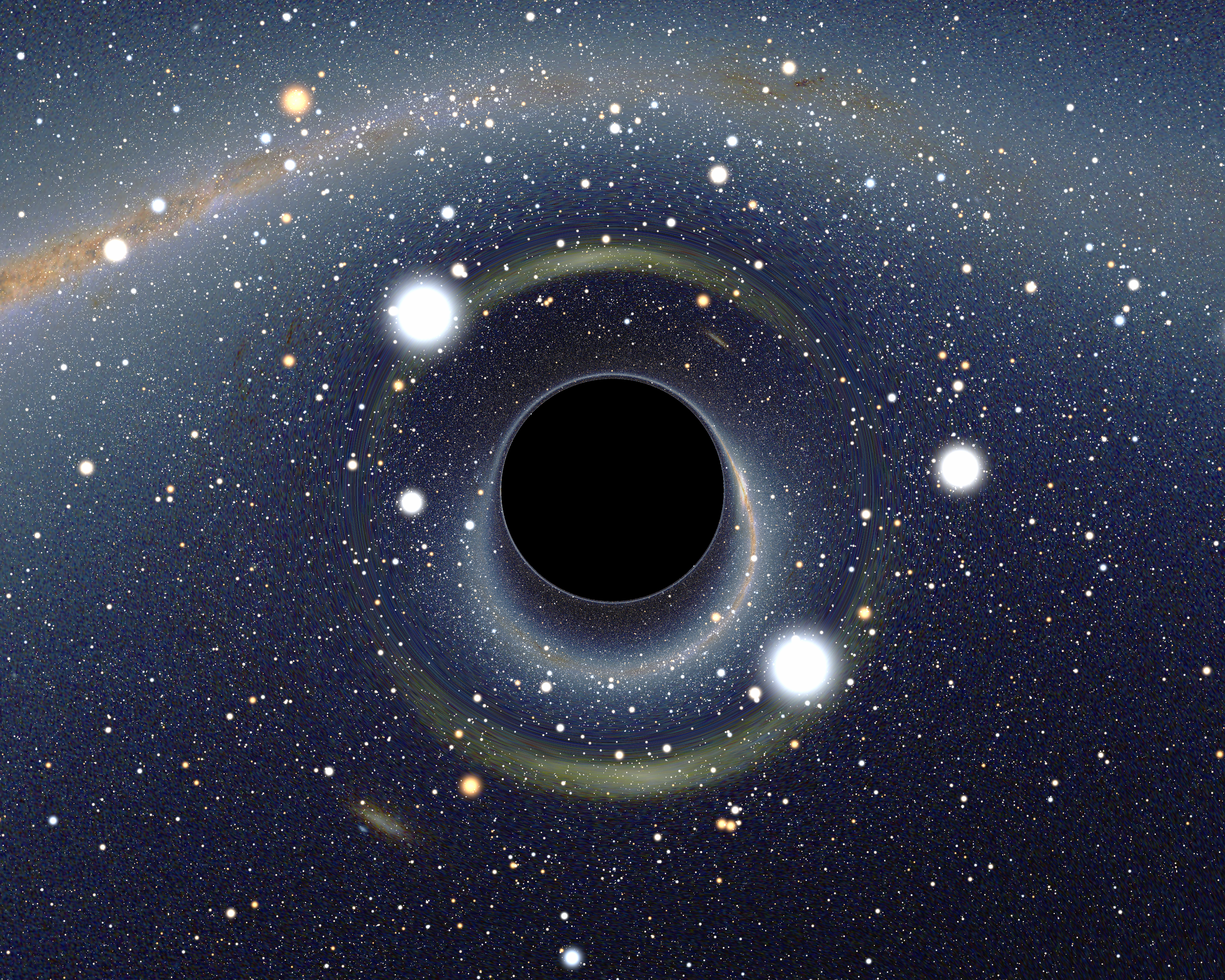 |
| Horrible cosmic deathtrap or delicious starship power supply? |
Just about the only promising way for humans to travel the vast distances between stars within a lifetime is the black hole starship. The basic operating principle is simple and also totally nuts. You collapse matter to make a black hole massing in at around 606 kilotons. Given it's so small, it releases intense Hawking radiation – this can be deflected out the back to provide thrust directly or used to heat reaction mass. Estimates of power output place black hole drives as being able to accelerate to 10% of lightspeed in about 20 days. Assuming a uniform acceleration rate (which is wrong due to relativity but a decent approximation), you could get to near-lightspeed in just under seven months.
Once you can get going that fast that quickly, the galaxy opens up a lot. Travel times are still measured in decades but at such a high fraction of lightspeed, time on-board the starship goes slower, so you could feasibly travel anywhere within a few hundred lightyears in only a few years (from your perspective).
So let's build one in GURPS Spaceships!
Like my recent post on bosers, this was inspired by Alastair Reynolds' novel Revelation Space, which I recently finished reading. For anyone not familiar with the novel, starships called "lighthuggers" travel between stars at a hair's breadth below lightspeed, powered by Conjoiner drives. These use an unknown method to provide huge amounts of thrust – up to 10G – with only minuscule consumption of hydrogen reaction mass, allowing them to accelerate up to near-lightspeed and down again several times without refuelling. The operating principle is unknown even to the Ultranauts who live on the lighthuggers – only the Conjoiners ever understood how they work. Black hole drives are a way to make spacecraft with similar or better performance than Reynolds' lighthuggers without the handwave of Conjoiner drives.
Singularity Rider (TL12)
The core of a singularity rider is its black hole drive; within the central containment sphere is a black hole massing several hundred kilotons, with a radius of only a few attometers. The black hole is small enough to be contained but large enough to provide a power output in the hundreds or thousands of petawatts. The containment sphere surrounding it is made from smartmatter exotic laminates, protecting the rest of the starship from it but also controlling it; the sphere can articulate, fold and open jets and exhaust ports to control which direction the thrust from the black hole is pointed. The black hole drive generates thrust by two mechanisms; Hawking radiation reflected from the inside of the containment sphere, and hydrogen reaction mass heated by intense gravitational stress and inspiral, then expelled before it can pass the event horizon. The black hole drive in action is terrifying and beautiful to behold, the containment sphere opening like a mechanical rose belching flame and fury. In full forward thrust mode the containment sphere glows with a perforated ring of exhaust outlets, the Hawking radiation and hyperhot hydrogen sailing past the rear truss.
The black hole has a lifetime of around three and a half years before it evaporates totally via Hawking radiation but this can be extended by slowly feeding it more hydrogen from the reaction mass tanks. The black hole can also be used to provide power by injecting deuterium and helium-3 fuel into the containment sphere, where it undergoes aneutronic fusion before passing the event horizon, the charged particles converted directly into power.
| TL | Spacecraft | dST/HP | Hnd/SR | HT | Move | LWt. | Load | SM | Occ | dDR | Range | Cost |
|---|---|---|---|---|---|---|---|---|---|---|---|---|
12
|
Singularity Rider
|
300
|
-1/5
|
13
|
10G/c
|
100,000
|
23,100
|
+12
|
1,000ASV
|
5/200/5
|
–
|
$13.382b
|
Systems
[1] ice armour (dDR 5) [free]
[2] open space (50 areas) [$2m]
[3-5] habitat (1,800 cabins) [$300m]
[6] hangar bay (3,000 tons, 500 tons/min) [$10m]
[core] control room (C10, Comm/sensor 13, 20 stations) [$200m]
[1] exotic laminate armour (dDR 200) [$2b]
[2-6] hot reactionless singularity drive (10G) [$7.5b]
[core] super fusion reactor (1pp, 1,750 years endurance) [$750m]
[1] ice armour (dDR 5) [free]
[2] fuel tank (5,000 tons) [$10m]
[3-6] cargo hold (20,000 tons) [free]
Features:
–Self-healing (regenerates 3 dHP per day) [$2b]
–Total automation (all systems) [$600m]
–Spin gravity (0.5G) [$10m]
Under the Hood
The central hull section uses several systems to represent various objects. The five hot reactionless drives represent the capacity of the black hole drive for thrust, while the super fusion reactor represents its ability to generate power. The exotic laminate armour and part of the drives together represent the containment sphere. The fact that the drive can generate thrust in any direction is just a "feature", since GURPS Spaceships 4e doesn't care about engine direction or thrust vectoring.
The vagueness of the habitat systems is deliberate, since there's a lot of space. The habitation sections should house around 1,000 people, with one-quarter as many cabin-equivalents set aside for their hibernation chambers for high-G acceleration. The remaining space should simply be assumed to have whatever services the occupants need for a several-year journey – medical bays, offices, sports areas, etc. It's not really important exactly how many of each there are, so I didn't specify. It also gives you freedom to adapt it to your purposes: a singularity rider's habitation section will look different depending on whether it's a civilian, merchant, scientific or military starship.

No comments:
Post a Comment